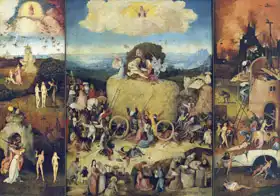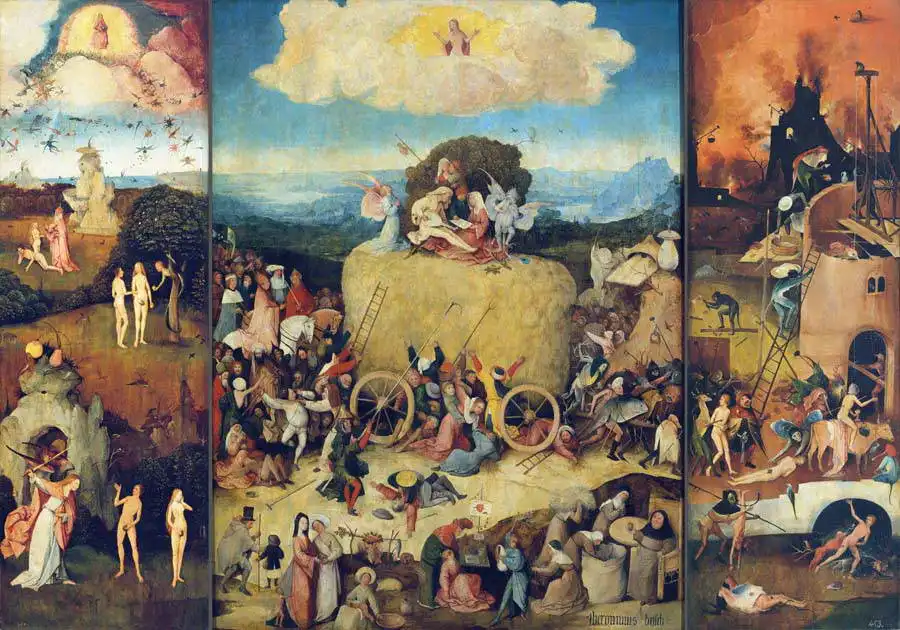About this finishing
Print. The image is printed on the top quality 10-ink HP Z9PS printer on HP matte 270 g / m2 paper. You can choose any size to an accuracy of 1 cm. A margin of 5 cm around the image is added to the size of the motif.


You can find a detailed description about our finishings
here.
Hay wagon
Date:
1516Medium:
panelLocation:
Museo del Prado, MadridDimensions:
200 x 135This triptych was part of a total of six triptychs collected by King Philip II of Spain (1570). It was later sold and divided into three works - the middle panel was owned by Isabella II, the right panel went to the royal castle at El Escorial, and the left panel went to Prado. In 1914, all three panels were displayed side by side. Triptychs by Dutch authors were often painted in a folded state - this one depicts the
Wanderer (Path of Life) and the ongoing haymaker as folded. One of the interpretations of the motif is that despite the temptations (scenes of various sins and punishments in the picture) one must follow the right path and not stray from it. The logic of the entire triptych is similar to the
The Garden of Earthly Delights : on the left, Paradise, the creation of humans, original sin and the expulsion from Paradise, in the middle, a wagon loaded with hay being pulled by fantastic beings to hell. People are trying to get hay from the wagon. In the crowd we can also find the pope or the emperor. On the altar there is an angel who alone turns his eyes to heaven, from which the Savior watches the whole scene. On the right is Hell, naturally. The dating was determined by dendrological analysis of the wood of the board.
Bosch painted picture Hay wagon in 1516. Prevailing color of this fine art print is brown and its shape is landscape. Original size is 200 x 135. This art piece is located in Museo del Prado, Madrid. This image is printed on demand - you can choose material, size and finishing.
Hieronymus Bosch (1450 -1516). Dutch painter whose real name is Jheronimus van Aken (his name is derived from the city s-Hertogenbosch). He came from a family of painters - his grandfather and uncles were all painters. Much of his work is devoted to sin and human moral failure. Bosch painted demons, half-human creatures, to evoke fear and unearth the evil hidden in man. He became famous mainly for his triptychs (the most famous is the
Garden of Earthly Delights. He was the first who created and worked with the world of dreams, fantasy creatures, nightmares and fears, as a response to former medieval religious ideas (about
deadly sins, a naturally sinful humanity, hell and eternal damnation).


